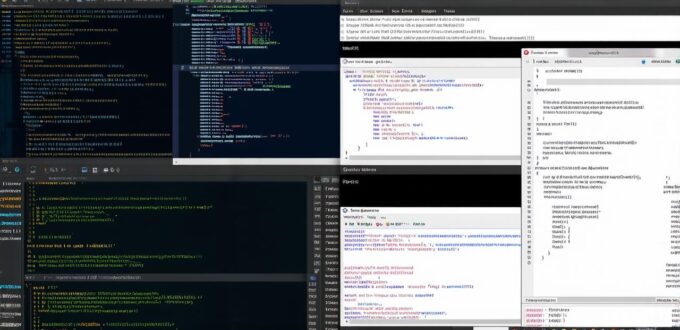Are you interested in learning how to program software? If so, then you’ve come to the right place. In this article, we will explore the steps you need to take to get started on your journey to becoming a skilled software developer. We will cover everything from choosing the right language and setting up your development environment to writing your first code and debugging your programs.
Before we dive in, let’s set some context.
Programming software is a complex and rewarding skill that requires a combination of technical knowledge, creativity, and problem-solving abilities. It can be challenging at times, but it is also incredibly fulfilling to see your code come to life on the screen and perform tasks that would otherwise be impossible without it.
So, without further ado, let’s get started!
Choose the Right Language
The first step in becoming a software developer is to choose the right programming language. There are many different languages to choose from, each with its own strengths and weaknesses. Some of the most popular programming languages include Python, Java, JavaScript, Ruby, PHP, and C++.
When choosing a language, it’s important to consider your goals and interests as a developer. For example, if you are interested in data science or machine learning, then Python is probably the best choice for you. If you are building web applications or working with client-side JavaScript, then JavaScript would be a better fit.

If you are completely new to programming, then it’s a good idea to start with Python or Ruby. These languages are relatively easy to learn and have a strong focus on simplicity and readability, making them ideal for beginners.
Set Up Your Development Environment
Once you have chosen your language, the next step is to set up your development environment. This is the software and hardware that you will use to write, test, and debug your code.
The specific tools and libraries you need will depend on the programming language you are using. For example, if you are working with Python, you will need to install the Python interpreter and a code editor such as Visual Studio Code or PyCharm. You may also need to install additional libraries or frameworks depending on your project requirements.
If you are working with JavaScript, then you will need to set up a web development environment that includes a code editor such as Atom or Sublime Text and a web browser such as Chrome or Firefox.
It’s important to choose a development environment that works well for you and allows you to be productive while you are learning. You may also want to consider using version control software such as Git to help manage your code and collaborate with other developers.
Write Your First Code
Now that you have set up your development environment, it’s time to start writing some code! The first program you write will likely be a simple “Hello, World!” program that prints the phrase “Hello, World!” to the console. This is a great way to get started and learn the basics of your chosen language.
As you continue to work on your programs, it’s important to focus on writing clean and well-organized code. This will make it easier for others to read and understand your code in the future, and will also help you develop good habits that will serve you well throughout your career as a software developer.
Debug Your Programs
Even with the best intentions, programs can sometimes behave unexpectedly or produce errors. When this happens, it’s important to have a good understanding of how to debug your code and identify and fix the problem.
Debugging is an essential skill for any software developer, and there are many different tools and techniques you can use to debug your programs. For example, you may want to use a debugger to step through your code line by line and see where things are going wrong, or you may want to use logging statements to track the flow of your program and identify areas where data is being lost or corrupted.
Learn from Your Mistakes
As a software developer, you will inevitably make mistakes along the way. When this happens, it’s important to learn from your mistakes and use them as opportunities for growth and improvement.
One of the best ways to do this is to take the time to understand why things went wrong and what you could have done differently. You may also want to seek feedback from other developers and get their perspective on your code and approach to problem-solving.
Real-Life Examples
To help illustrate the concepts we’ve covered in this article, let’s take a look at some real-life examples of how these steps might be applied in practice.
For example, suppose you are interested in building a simple weather application using Python. Here’s how you might go about it:
- Choose the right language: You decide to use Python because it has many powerful libraries for working with data and APIs.
- Set up your development environment: You install the Python interpreter, Visual Studio Code, and the requests library for making HTTP requests.
- Write your first code: You write a simple program that uses the OpenWeatherMap API to retrieve weather data for a given city and prints it to the console.
- Debug your programs: You use a debugger to step through your code and identify that you need to convert the temperature from Kelvin to Celsius before printing it.
- Learn from your mistakes: You take the time to understand why the conversion was necessary and update your program accordingly.
Summary
Programming software is a challenging and rewarding skill that requires dedication, hard work, and a willingness to learn from your mistakes. By following these steps and choosing the right language, setting up your development environment, writing your first code, debugging your programs, and learning from your mistakes, you can become a skilled software developer in no time.
Remember that becoming a great software developer takes time and practice, so be patient with yourself and keep working hard. With perseverance and determination, you can achieve anything you set your mind to.
